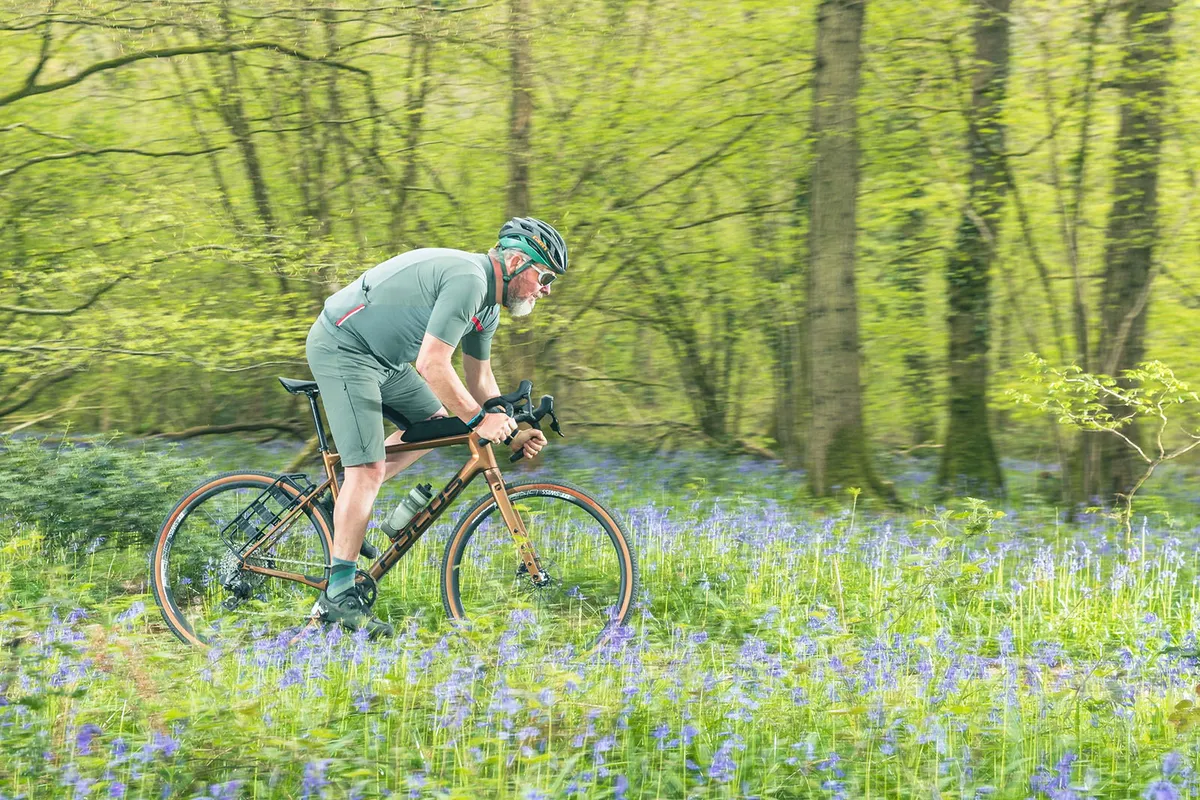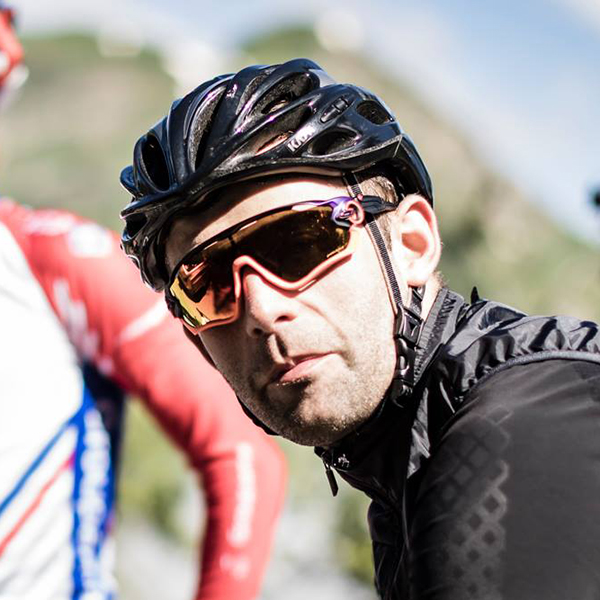Long have I admired those who make riding their bikes off-road seem easy.
If I watch (or indeed, try to follow) an experienced off-road rider in their natural domain, I’m always gobsmacked by how effortless their bike-handling skills are.
It confounds me how fast they can go over loose surfaces and features – and how simple it all looks.
This August, I was invited to the Swiss Jura mountains to check out the 2024 BMC URS gravel bikes, and – in keeping with the adventurous ethos of the URS – the brand laid on some suitably extreme gravel riding designed to test the bike to the limit.
Surely I could use this to push my riding skills to the next level, boost my confidence riding on more technical terrain and generally turn myself into a bit of a hero.
Quickly, I found I needed to leave my ego in my wooden cabin, as I was confronted with stints of gnarly singletrack, narrow off-camber trails and a constantly changing mix of gravel farm tracks.
I have emerged a better rider as a result of my occasionally terrifying ordeal, and it’s not just because of the kit and setup I was riding.
The ride plan

As with most bike launches, BMC’s marketing team had informed me of the basic plan before I flew out.
The event would consist of a 110km adventure, starting in Oensingen, and taking in a mix of terrain, from wide princess gravel to gnarlier singletrack trails, with a mix of steep climbs and fast – and technical – descents.
I was told some sections might involve some hike-a-biking, but that the terrain was picked to showcase the URS’ adventure-gravel capability.
We’d stop at a remote bison ranch overnight after around 75km of riding, before heading along the mountain ridge to the peak of the Chasseral mountain the next day, then down to our finish point in Neuchâtel.
A proper adventure, then – at least, for a dyed-in-the-wool road cyclist like myself.
Waiting to spring a surprise

One thing riders don’t usually have to deal with on the road is a loose surface.
I can hear the protests from UK-based road cyclists from here, but perhaps the quality of my local roads is a topic for another day.
Given I prefer riding on beautifully paved roads, I sometimes find gravel riding a nerve-wracking experience, because the characteristics of the surface are uncertain from one moment to the next.

To me, there is little telling how much the ground will give way, at what point the tyre will bite, or if I’ll encounter a hidden obstacle, such as a rock.
Many people’s natural response is to slow down, but this only serves to make me more nervous as I notice the ground subsiding ever more.
On the opening tracks of my test ride in Switzerland, things were relatively wide and straightforward, but they were about to get a whole lot more tricky.
Feeling overwhelmed by singletrack

Singletrack is often the preserve of the gnarliest mountain bikers. It's challenging, I think, because one mistake can end in jeopardy.
For me, the biggest challenge is sensory overload – the information coming into my brain is coming too thick and fast to deal with – and most of it is totally irrelevant in the moment.
I don’t need to know about the outcrop of bushes between the trees over there to my right, or the tree stump placed several metres off the riding line to the left. Nor do I need to realise there’s a 90-degree turn 100 metres ahead just yet, thank you very much.

Fundamentally, I think this is a problem of focus, and I’m sure I’m not alone.
As you ride a singletrack trail, you need to have your focus on what lies ahead rather than the immediate space in front of you, or the terrain next to it.
The fact is, I need to have already dealt with the immediate obstacle, while my brain is processing the information of what’s to come and making decisions about how to act, before processing the next ‘step’, and so on.
I need to be able to filter out extraneous information – a problem ironically made more difficult when the width of the trail is restricted.

Suddenly, trees, rocks and fences just off the trail (things I’ve no business going anywhere near) seem to have Star Trek-like tractor beams, ready to ensnare me.
The speed at which my colleague Luke Marshall (among others) can filter out all this noise, for example, completely galls me.
String a few corners together, though, and suddenly I feel like I’m on cloud nine. Right until I misjudge that huge tree root, of course…
We’re going up THAT?!

Take it from someone who likes climbing – it’s so much harder on gravel than it is on the road.
Well-planned roads are usually designed in such a way that they temper the hill’s gradient – it’s why you’ll find 21 hairpins on Alpe d’Huez, for example.
Gravel climbs tend to proceed more directly up a hillside, which, of course, can make them devilishly steep. The loose surface and treaded tyres combine to heighten rolling resistance, too.
But it’s the lack of traction that really makes them tough.
As you pedal, the rear tyre repeatedly grips up and loses it again, which means your effort is far spikier than on the road.

Couple this with the urge to drive on to avoid unclipping (because it’s almost impossible to get going again), and I find I end up putting in far bigger efforts than I’d need to if I were on a smooth surface.
This is also made more challenging when you need to pick a line on a rocky path – suddenly, your concentration is split, which makes applying it to both even more challenging.
That said, get it right and make it all the way to the top without stopping, and you can pat yourself on the back for a job well done.
Get it wrong (and you will), and you need the patience of a zen master as you pick the bike up and start hiking.
Nightmares filled with rocks

Above all else, I dislike rocks (sorry, geologists). Especially when they’re littered on a descent, in my path.
They get in the way, offer completely unknown levels of grip, disrupt any gain in speed, and generally disturb what our mountain bike team might call “flow”.
Given you can’t move them, you’re forced to either find a path between them, or ride straight over them.

But each one offers a little nugget of adrenaline – like the kind you get with each twist of a horror movie.
As I (slowly, I will admit) threaded the needle, or rode up and over the unavoidable obstacles, each little spike of success goaded me into taking on the next challenge.
This, of course, is far from risk-free – every now and then, a pause to take a breath (having held it for a solid 30 seconds or more) is highly recommended.
See? It’s all fun really

The reality is, although I’m not yet bursting to launch myself off sheer drops and over jumps like my MTB colleagues, gravel riding is fun.
In my local area, I can stick largely to easier, known routes when testing any kind of bike (it’s far easier to compare when more things are equal). However, my experience in the Swiss Jura has opened my eyes to pushing my technical ability more.
The sense of achievement is real, even if you live by your wits for much of the journey. After all, what’s life without a bit of risk?
The adventure element is also part of the appeal, I think – riding into the great outdoors over terrain you’d never normally consider is a liberating experience.
I still prefer road cycling – don’t get me wrong – but I know I’ll be doing more adventurous gravel miles going forward.





